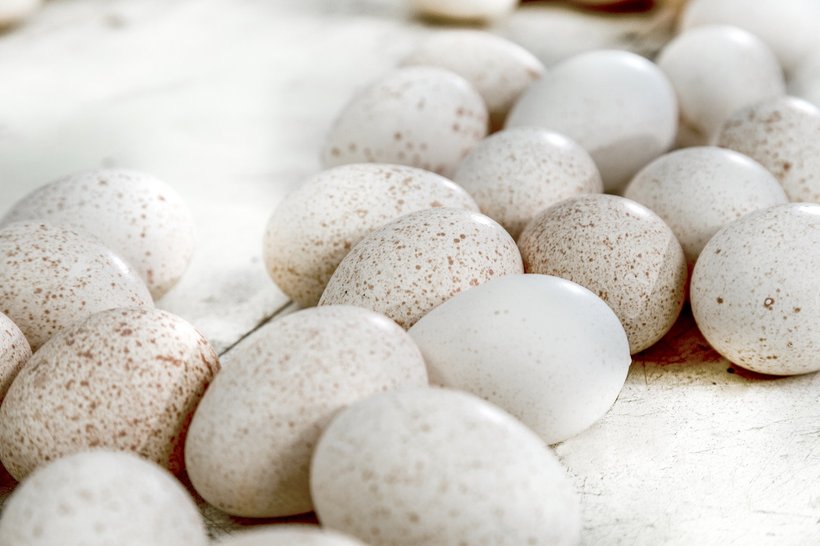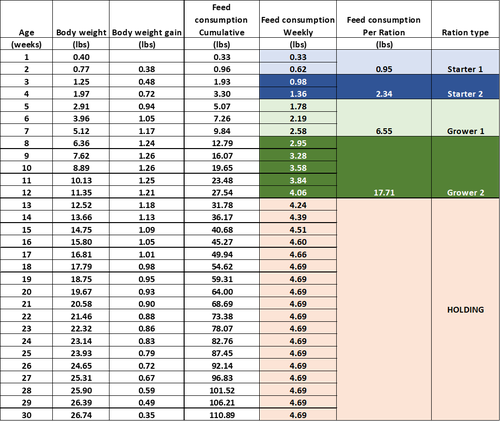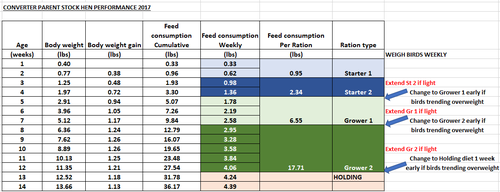
Published on Oct. 21, 2019
Optimizing egg production: What you need to know
Today’s turkey breeders are in a unique and challenging position. They are under pressure to deliver a high number of top quality eggs. At the same time, the demand for more meat from commercial birds has increased, resulting in larger breeders. These conditions put added stress on the hen to perform in a smaller space.
In order to optimize egg production, I recommend three key areas of focus:
- Weight profiles and feeding programs
- Densities
- Nest training/collection schedule
This article is a summary of a presentation delivered at North Carolina State’s annual Turkey Industry Days conference.
Weight profiles and feeding program
Weight profiles and feeding programs are important factors in breeder performance, especially during rearing. Heavier birds and reproduction are negatively correlated. This presents a challenge given the demand for producing a heavier bird for the processing plants. Breeders should follow the recommended parent stock body weight and growth curves proposed by their genetic providers in order to achieve the full genetic potential of their flock.
View the Hybrid Turkeys growth recommendations during rearing
Diets fed to your flock impact their growth and wellbeing. It is important to follow the diet recommendations of your genetic supplier, which are generally based on age in order to fulfill the physiological needs during that time period. Review our parent stock nutrient guidelines to see more details of the various diets.

Example of diet breakout by week of age
Troubleshooting flock performance
It is important to monitor flock growth and understand the correlation to various diets. Adjustments can be made if you find your flock weights deviate from the recommended standards.
For example, if you are noticing that your birds are trending underweight, you can extend the diet you are currently using until you reach the next milestone. If the birds are trending overweight, change to the next diet earlier in order to manage weight gain.

Example of troubleshooting flock performance
Densities
It is crucial for birds to have adequate access to feed and water, good litter conditions and adequate ventilation. All of this is possible with appropriate densities. Following density recommendations will contribute to healthy, active birds, both in grow-out, conditioning and lay.
In lay, Hybrid recommends a minimum of 6 sq.ft / hen total barn space and a maximum of 5 hens / nest; however, we recognize that many growers run their farms at slightly higher density levels. Our studies have found that giving birds more room to move will pay-off in fewer health challenges and better quality eggs.
Nest training and egg collections
When birds are first placed in the lay barn, it is important to let them settle and disturb the birds as little as possible. We recommend to open the nests 5-7 days before the first egg is expected.
At the onset of egg production, and prior to saving eggs, leave eggs in the nests, put floor eggs in the nests and collect by hand at end of the day. Additional best practices during nest training include
- For auto nests, apply a small amount of shavings to each nest 2-3 days prior to first egg. Nests should be completely tied open until 20% production, then stagger lowering of all traps over 3-5 days depending on nest usage.
- Birds grouping together in corners need to be disturbed and moved continuously.
- At onset of egg production it is beneficial to physically place birds in a nest. If you don’t break them of this habit quickly they will become consistent floor layers.
- Automatic nest ejection can start gradually at first day of saving eggs.
- Gradually increase the number of ejections per day until flock achieves 50% production and full collection program is implemented.
Collections
If you are using an auto-nest system, below is an example of a collection schedule
- Day 1: of saving eggs: 9 am/3 pm (2 collections)
- Release flaps on bottom of the ejection paddle to capture the eggs to the belt.
- Walk floor at every collection, now until the end of lay.
- Day 2: 7 am/11 am/3 pm. (3 collections)
- Day 3: 7 am/10;30 am/1 pm/4 pm (4 collections)
- At 20% production: 7/9:30/11 am/12:30/2/4 pm (6 collections)
- Add 1 collection per day until 50% production, then implement full program of 10-12 collections per day.
Focusing on weight and feed management, density, nest training and egg collection will put you on the right path to optimizing egg production. Managing parent stock birds involves many other areas of focus including lighting and water sanitation. Explore some of our resources below to learn more.

